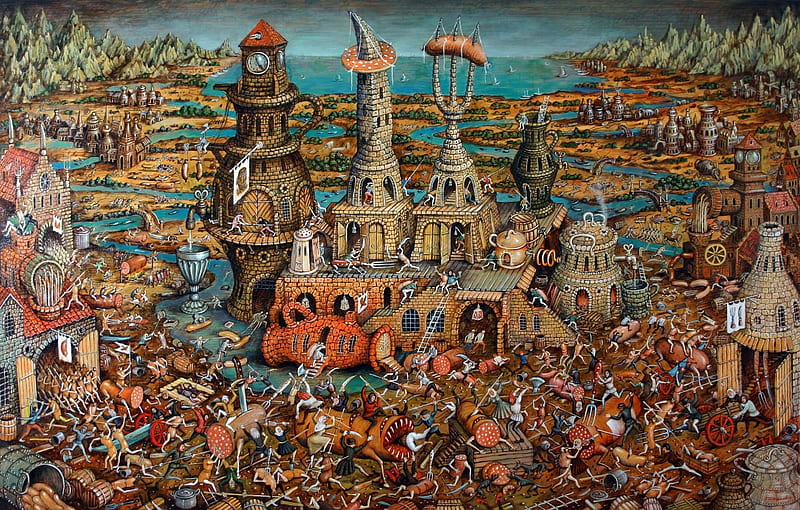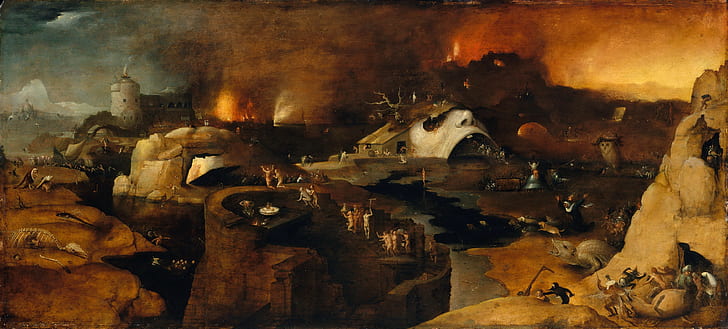Hieronymus Bosch: Unravelling the Enigmatic World of His Paintings
 Posted On
Posted On
Hieronymus Bosch, a Netherlandish painter of the Late Middle Ages, is renowned for his enigmatic and fantastical artworks. Born Jheronimus van Aken in the late 15th century, Bosch’s paintings have fascinated and puzzled art enthusiasts and scholars for centuries. His works, often characterized by their surreal and nightmarish depictions, offer a glimpse into the intricate complexities of human nature and morality. In this article, we will explore the life and artistry of Hieronymus Bosch and delve into some of his most iconic and influential paintings.
Early Life and Artistic Beginnings
Little is known about Bosch’s early life, but it is believed that he was born around 1450 in ‘s-Hertogenbosch, a town in the Duchy of Brabant (now part of the Netherlands). His family of painters and craftsmen likely influenced his early artistic training. By the time he reached his mid-twenties, Bosch had established himself as a painter and became a prominent member of the Brotherhood of Our Lady, an influential religious society.
The Enigmatic Style of Bosch
Hieronymus Bosch’s style is characterized by its unique and surreal imagery. His paintings often feature grotesque and fantastical creatures, nightmarish landscapes, and bizarre juxtapositions of human figures and animals. Bosch’s works reflect the prevailing religious beliefs and fears of his time, particularly the notion of the afterlife and the struggle between good and evil. His paintings often contain moral and allegorical elements, serving as cautionary tales to viewers.

The Garden of Earthly Delights
One of Bosch’s most famous works is “The Garden of Earthly Delights,” a triptych painted on oak panels. The left panel portrays the creation of Adam and Eve in the Garden of Eden, the central panel depicts a surreal and hedonistic paradise filled with cavorting nudes and extravagant pleasures, and the right panel portrays a nightmarish hellscape of torment and suffering. The painting’s central panel, in particular, has puzzled art historians with its intricate and bizarre scenes, giving rise to numerous interpretations regarding its meaning.
The Temptation of St. Anthony
Another notable work by Bosch is “The Temptation of St. Anthony,” which showcases the hermit Saint Anthony confronted by a cacophony of disturbing visions and temptations. The painting highlights Bosch’s mastery of detail, as he populates the canvas with a menagerie of bizarre and malevolent creatures. The work reflects the medieval fascination with the torment faced by saints in their spiritual struggles.
The Last Judgment
“The Last Judgment” is a powerful triptych illustrating the final judgment day as described in Christian theology. The central panel portrays Christ as the judge surrounded by angels and the blessed ascending to heaven, while the damned are being cast into hell. Bosch’s depiction of hell is particularly gruesome, filled with macabre and torturous scenes. The triptych serves as a reminder of the eternal consequences of human actions.
Legacy and Influence
During his lifetime, Hieronymus Bosch was a highly regarded artist, and his works found favor among the Burgundian court and other wealthy patrons. However, after his death in 1516, his reputation waned, and his paintings were largely forgotten for several centuries. It wasn’t until the 19th and 20th centuries that Bosch’s art experienced a resurgence of interest, influencing Surrealists like Salvador Dali and Max Ernst.
Hieronymus Bosch’s paintings remain a testament to the artistic genius and imagination of a visionary master. His enigmatic style and profound allegorical themes continue to captivate and perplex audiences worldwide. Through his works, Bosch transports us to a world of wonder, fear, and contemplation, challenging our perceptions and inviting us to explore the depths of human nature. As we continue to study and appreciate his art, the mystique and allure of Hieronymus Bosch’s paintings will endure for generations to come.



